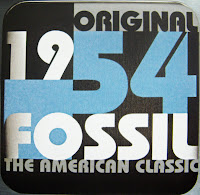While I rarely have time to read in my daily life, I spend a disproportionate amount of time seeking out good design to fill my proverbial creative well.
My favorite magazine would have to be
Idn, but I am also a frequent reader of
Applied Arts,
Juxtapoz,
Toronto Life,
Esquire, and
Revolver. I am always looking for new design magazines because I always appreciate design more thoroughly when I am looking at the physical representation rather than the online version.
I do read the newspaper as well,
The Toronto Star being the paper delivered to my home, and the
National Post when I am at work. But truthfully, I read alot less in the real newspapers than I would in the rag editions like
Metro etc, simply because it's not nearly as exhausting.
Otherwise, I read a lot of books on my off-time from class, we're trying to develop our library for our future 'study' -or home office- when we have a larger space than our apartment. I personally read alot of fiction such as Sci-fi, Satire, and alot of this being dystopian novels which I find fascinating. My favorite authors are
John Wyndham,
Kurt Vonnegut, and
Chuck Palahniuk whose works are always steeped in social commentary(likely a primary source of my cynicism towards pop culture figures)
I also consume design texts above and beyond those recommended for classes, (see earlier post on the Stylepedia) and am a big fan of books published by
Steven Heller or through
Rockport.






































